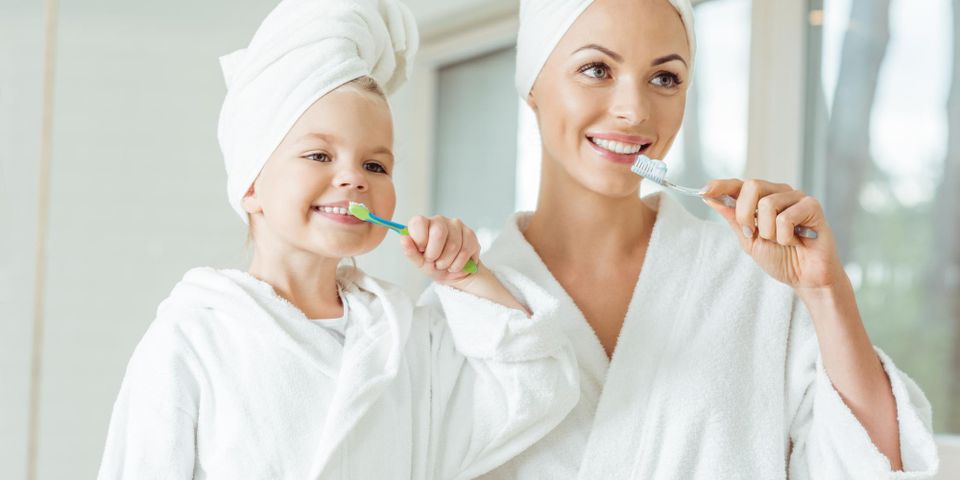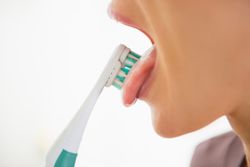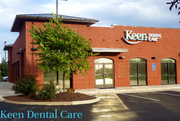
Every dentist recommends brushing at least twice a day to remove plaque and bacteria, and prevent dental diseases. While some tips are better known, like brushing in circles for at least two minutes, other, lesser-known treatments can enhance your oral health. To take advantage of all of the benefits of brushing, consult the guide below.
Do:
Use a soft toothbrush.
Toothbrushes come in lots of different configurations. One of the most important attributes is the firmness of the bristles. It may seem counterintuitive but the softer the bristles are the better it will clean your teeth and gums. Hard bristle toothbrushes are less flexible and do not do a good job of cleaning the most important areas, below the gumline and in between the teeth. Soft or extra soft toothbrushes will be more gentle on the gums and still remove the bacterial plaque that forms on your teeth.
Replace your toothbrush more often.
Most people only replace their toothbrush when the bristles have become substantially warped, or after they’ve been sick. Even if you’re not ill, the brushes are exposed to tartar, plaque, and germs daily. Bacteria may still be present on the brush after washing, increasing the chances of reinfection. Replace the brush every three months, or earlier, if the bristles are wearing down.
Brush your tongue.
 Bacteria tend to accumulate on the tongue, creating bad breath, and allowing halitosis to develop over time. The bacteria can also spread to other areas of the mouth and lead to gum disease, which can affect the entire body. Brush your tongue at least once a day. Position the toothbrush toward the back of the tongue and gently move it forward then back. Spit the accumulating saliva and rinse with warm water.
Bacteria tend to accumulate on the tongue, creating bad breath, and allowing halitosis to develop over time. The bacteria can also spread to other areas of the mouth and lead to gum disease, which can affect the entire body. Brush your tongue at least once a day. Position the toothbrush toward the back of the tongue and gently move it forward then back. Spit the accumulating saliva and rinse with warm water.
Don’t:
Brush aggressively.
The outer layer of your teeth, enamel, is a hard surface that absorbs the damage done by chewing, crunching, and grinding. However, brushing with too much pressure will slowly wear down the enamel and damage the gums.
The most common sign of aggressive brushing is bleeding or receding gums. When you spit out toothpaste, there should only be saliva and toothpaste. Since the harsh brushing wears down the enamel, teeth will become more sensitive. Dentists can also detect aggressive brushing during appointments. Upon inspection, they’ll see that the gums have begun to recede.
Plaque is soft and easy to remove while brushing. Hold the brush loosely, and don’t press the bristles down on the teeth or gums with too much force. You may also consider purchasing a brush with softer bristles, which will be easier on your teeth and gums.
Use an abrasive toothpaste.
Individuals can help to preserve their enamel by avoiding toothpaste with high levels of abrasiveness. All brands of toothpaste have abrasives in them to help remove stuck-on food and bacteria. However, some have higher levels of abrasiveness than others. The higher the abrasion, the more damage gets done to the enamel.
Toothpaste abrasivity is measured by relative dentin abrasivity (RDA). Research toothpaste brands to find one that has fluoride but is lower on the RDA scale. The values are 0-70 (low), 70-100 (medium), 100-150 (high), and 150-250 (harmful to the enamel). For example, most “whitening” toothpastes are highly abrasive to try and remove surface stains to achieve the “whitening” effect. They do not actually change the color of the teeth and are not recommended for long-term use unless the RDA is below 70.
Even with twice-daily brushing, you should seek out a dentist for bi-annual cleanings to ensure your oral health. At Keen Dental Care, in Columbia, MO, they combine compassionate treatment with comprehensive services that the whole family can benefit from. From routine cleanings to advanced procedures, you'll get the care you need at all times. For more information on their services, visit their website. To schedule an appointment, call (573) 875-5336.
About the Business
Have a question? Ask the experts!
Send your question

